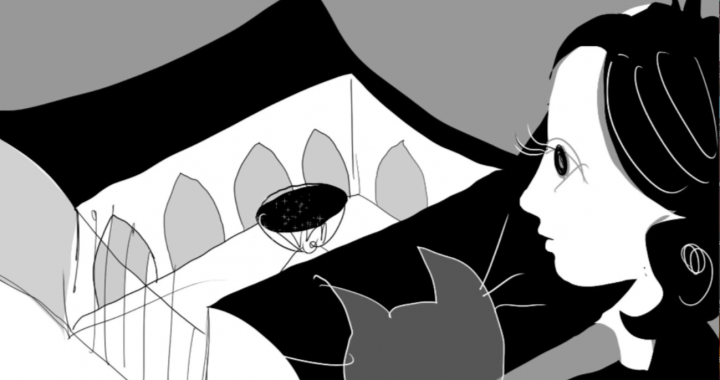So. The Hebrew letter ב –bet– that you know as the letter ‘b.’ So okay, let’s say you already knew that ‘bet‘ means ‘house.’ But did you know that the letter bet is quite literally built like a house? Can’t see it? If you’ve spent some time in the Middle East, or even in Spain (so heavily influenced by Moorish architecture, at least in Andalusia) you’ll know that the courtyard is the center of the house, and the center of the domestic and often the economic life of the household. Almost all chores, especially women’s chores, traditionally have been conducted inside the courtyard, from cooking to couscous or mergez making (in North Africa, say), sacrifice of the sheep on ‘Aid el Kebir for Muslim families, to bathing, sewing, henna application, celebrations and the offering of hospitality to honored guests, and much much more.
One of my favorite ‘much, much more’ courtyard activities is the production of olive oil at home, with the olive press in the middle of the courtyard, and enough room for your camel to walk the circle turning and tightening the press, thereby releasing the oil. Yes you do need a fairly large courtyard for this. But believe me, it’s worth it. It’s also a bit messy.
In villas, palaces, synagogues, and mosques and even apartment buildings the courtyard can hold a beautiful fountain in the middle. Sometimes, as can be seen at the Alhambra in Granada, with channels of water flowing from a central spring down through rooms constructed a bit downhill. Brilliant idea and utterly breathtaking.
And there’s our letter bet—with the fountain (or, perhaps olive press) in the center. Our nikudah, or dot, in the center of the letter tells us something about the quality of the letter in a word. Is it opulent, awake, flowing and alive, or is it devoid of that life-force, of only for the moment? The bet, you see, can change that way. I’ll spare you the grammar of it. Look it up.
But here’s the thing. The courtyard is enclosed on three sides, with usually a gated opening on the fourth. It is analogous to the womb—a safe, warm, private female space in which to nurture the young. This essentially female space is highly restricted, with access limited to those who are trusted and belong. It is analogous to the city itself —the medina— that serves the same purpose, really. It is protected and defended, and at least in the past) was limited and had strict and exclusive access,
So, think of the letter bet as the womb —the place of procreation— with expanding circles of inclusion and exclusion. But think of it too as the locus of Creation.
For when you begin to read the Torah, the very first letter is the very first bet at the beginning of all existence. I think of it as the back-end of the universe, with all of Creation churning and rising out of that fountain at its center, and pouring the universe (and all of Torah) out from its gates. Making what was originally private and proprietary (like our children) now public open to all, at least outside our gates.
That’s probably enough for now, right? I could go on.
Oh, but wait— I do go on. For it is the fountain at the center of the bet that our girl Malkah discovers. And she finds there … well, you’ll have to wait and see what she finds there. It’s utterly remarkable. There are more secrets hidden in that private space. And we, we hope to share it.
Um. I haven’t said this before, but you know—you’re welcome to support us.
Be a sponsor of the Hebrew Letter Bet—and we will honor you with more secrets of Creation from the ancients…
—mira z amiras

